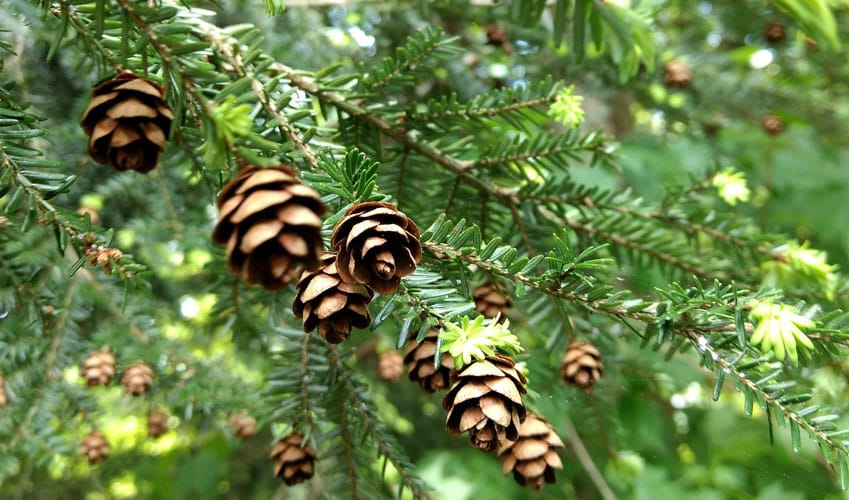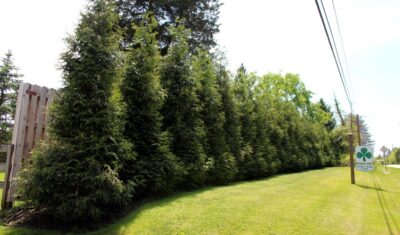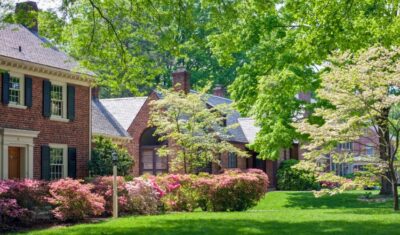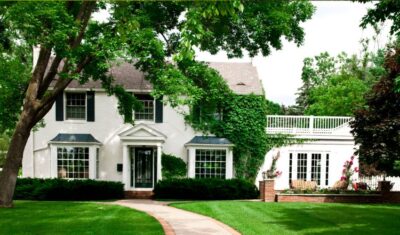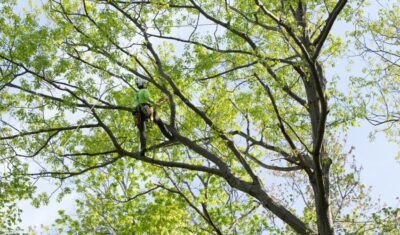A tiny pest is causing huge problems for hemlocks in northeast Ohio.
If you have any hemlock trees on your property, the hemlock woolly adelgid (pronounced uh-DEL-jid) may already be destroying them. First discovered in Ohio in 2012, these minuscule pests may appear insignificant at first, but they can kill an entire tree in as little as a single season, or slowly kill it over many years.
In 2017, hemlock woolly adelgids were discovered in Lake and Geauga counties; we now frequently see them throughout our service area. Previous to this, most Ohio infestations were in the southeastern part of the state.
To see the latest map of areas infested with hemlock woolly adelgid in Ohio, click here.
What is Hemlock Woolly Adelgid?
The hemlock woolly adelgid (Adelges tsugae) is a small (less than 1/16”) invasive pest that can often be found on the underside of hemlock needles, where it sucks out sugars from the tree. They look similar to aphids, and they multiply and spread incredibly quickly. Because of this, they can take over an entire tree and consume the sap out of it in a single season, causing the tree to dry up and die.
The hemlock woolly adelgid (or HWA) was first discovered in North America in the 1950s in Virginia. It most likely hitched a ride on some ornamental trees from Japan and has since spread on eastern and Carolina hemlocks across 19 states.
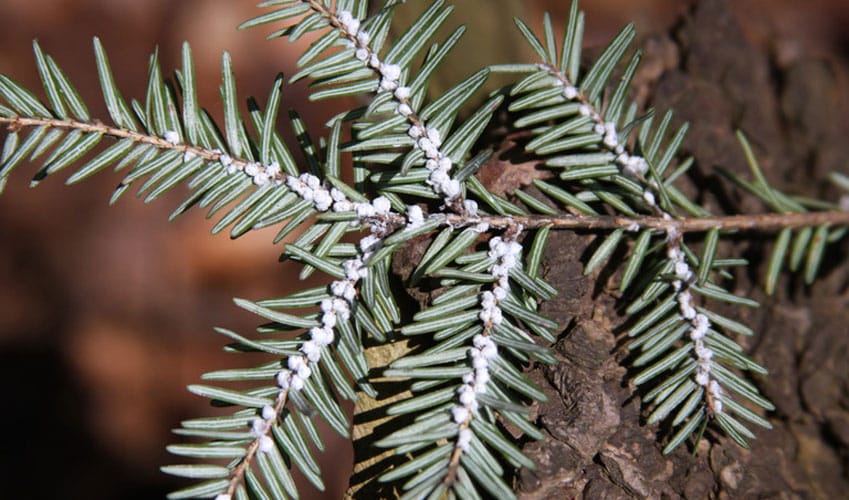
Hemlock woolly adelgid on the underside of Eastern hemlock branch. Image: Steven Katovich, USDA Forest Service, Bugwood.org
How Do Hemlock Woolly Adelgids Spread?
Native to countries including China, Taiwan, and Japan, hemlock woolly adelgids don’t cause as much damage in Asia because they have natural predators that keep the population at bay. Here, it has no natural predators so this diminutive insect has rapidly spread.
Between April and June, HWA egg masses open and up to 300 tiny “crawlers” are released. The reddish-brown crawlers are so small they are nearly microscopic; even if your hemlocks are heavily infested, you won’t be able to see crawlers with the naked eye.
Starting from the tree where the egg mass was located, the juvenile adelgids spread across the branches, seeking needles to feed on. Some are carried by wildlife or weather to other hemlock trees nearby, where they spread and grow until they are large enough to reproduce (in just a few weeks!).
Once they reach adulthood, some of the HWAs will grow wings and fly away in search of other sources of food. Others will stay on the tree to continue eating and reproducing.
How can I identify Hemlock Woolly Adelgid?
From October to May, regularly inspect the branches on your hemlock trees. Late winter and spring are the best times to spot them.
The first place to check is needles that are already brown or drying out. On the underside of the branches, look for small, white, wool-like egg sacks, which resemble small tufts of cotton. Just one of those 1/8” masses can contain hundreds of eggs, which is why finding and identifying them quickly is vital to the health of your trees.
How Do I Manage Hemlock Woolly Adelgid?
With no natural predators to manage the spread of this destructive pest, the most effective method is spraying a nontoxic pesticide, namely horticultural oils and insecticidal soaps. These are sprayed on the tree and basically smother the HWA.
Learn more about horticultural oils here >>
If a dormant oil (a horticultural oil used before “bud break”) is sprayed before new needles appear on the trees in the spring, and the nontoxic horticultural oils or insecticidal soaps are sprayed a few times during the growing season, adelgids are often stopped from spreading.
Pruning can also play a part – badly infested branches can be pruned, if possible, and double-bagged and thrown away or burned. Never add infected branches to mulch or compost piles.
Unless you have a dwarf hemlock tree, the oils and soaps need to be commercially applied to ensure that all surfaces of the tree are covered.
Proper timing of the applications is another key to success in stopping the spread of the HWA.
Independent Tree is experienced in hemlock woolly adelgid maintenance and can partner with you in keeping your hemlock trees healthy and vibrant.
What else can I do?
Help keep your trees healthy by ensuring that they’re receiving enough water, especially during times of drought. Keep up with maintenance such as pruning, but be sure that the pruning is done properly to prevent other pests and diseases.
Eastern hemlock trees are a vital part of our ecosystem here in northeast Ohio. They prevent soil erosion, provide shade for other plants, and are a food source for many kinds of wildlife.
If you think that your eastern hemlock trees might be infested with hemlock woolly adelgid, contact us for an inspection and a treatment plan.
Contact Independent Tree
Think your tree may be suffering from hemlock wooly adelgid or another pest? Independent Tree can help! Our plant health care experts can assess your trees and check for any issues (including hemlock wooly adelgid), suggest treatments or preventative care, and give suggestions for your tree's health. Contact us for more information.Recent Articles
Topics
About The Author

STAY IN THE LOOP
WITH OUR
LATEST UPDATES
"*" indicates required fields

